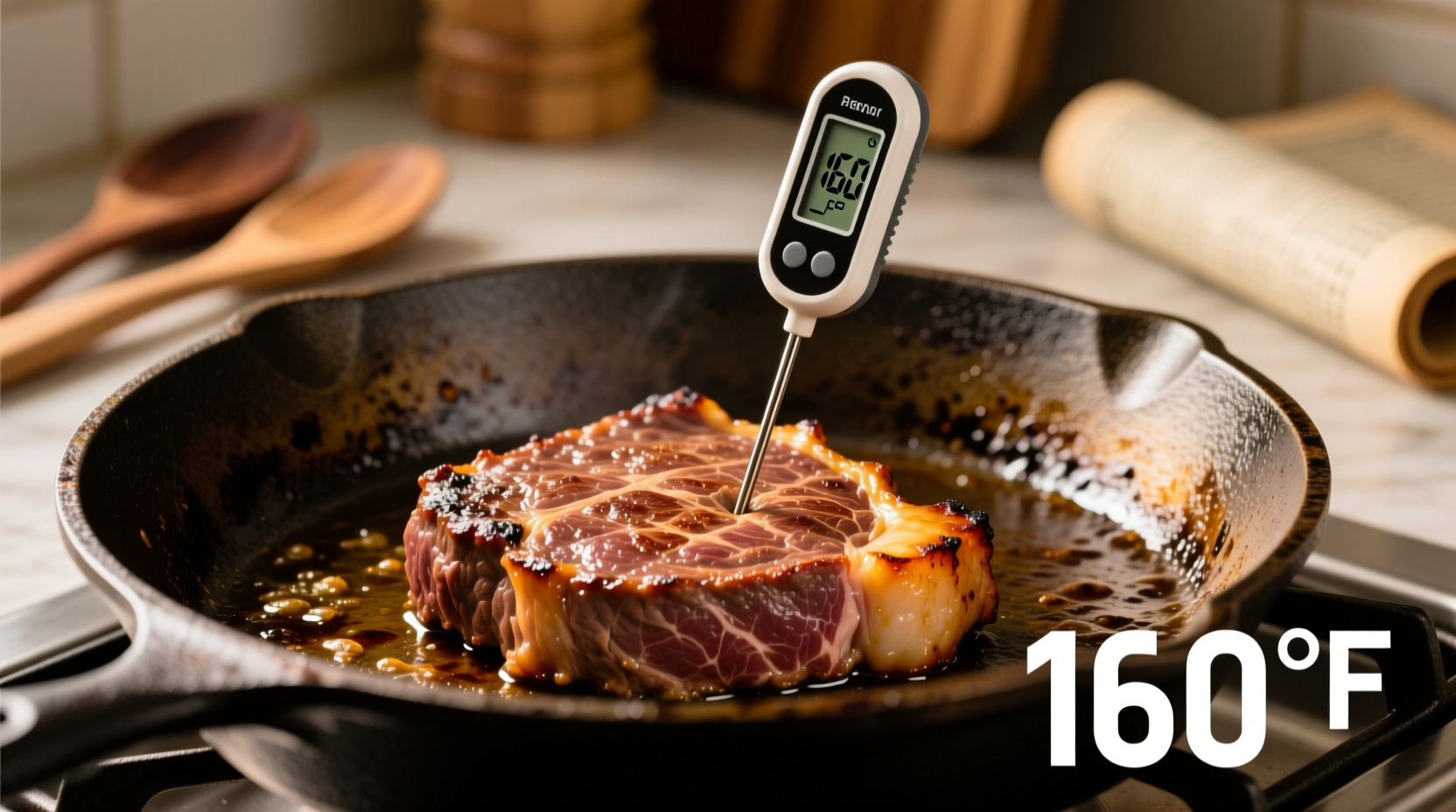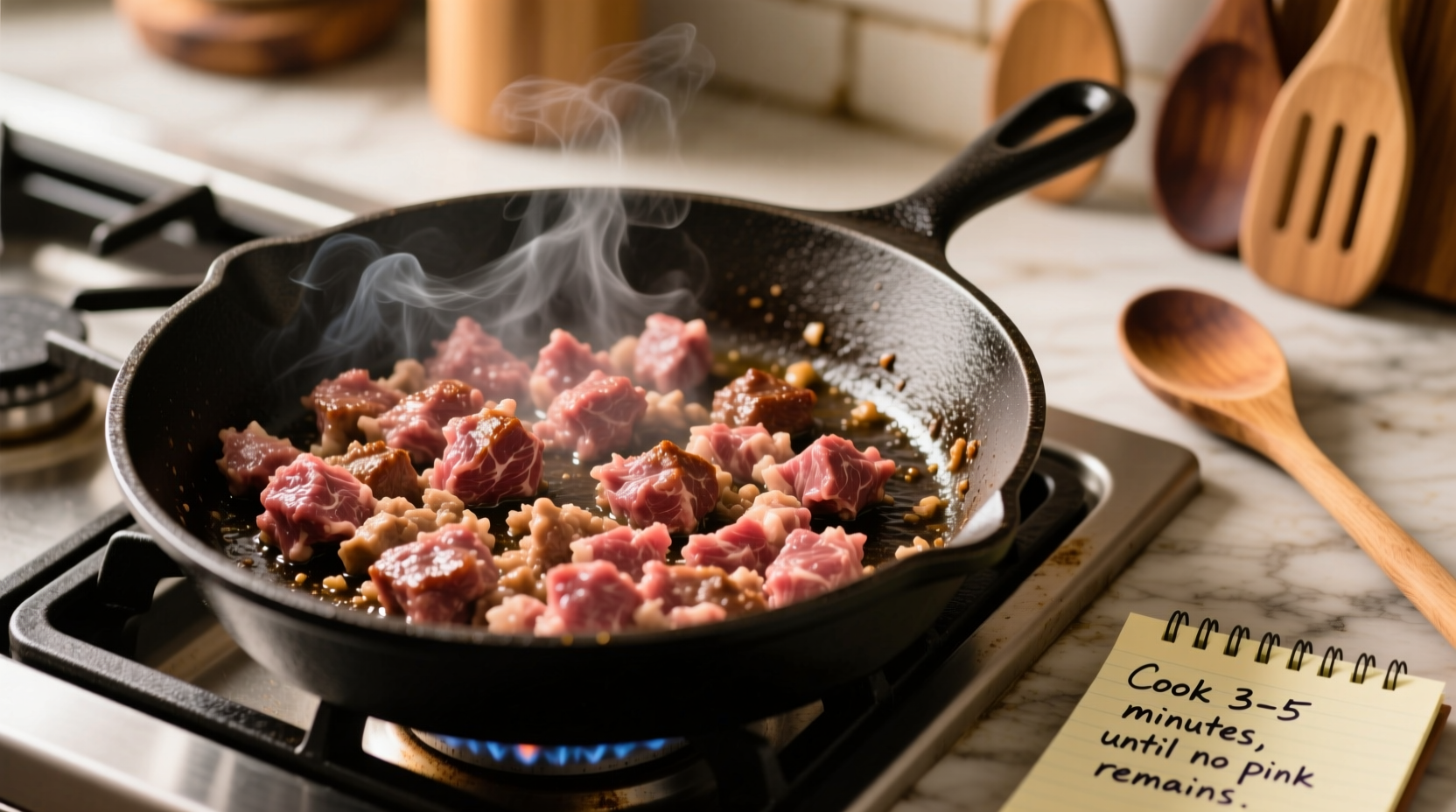Getting ground beef cooking time right isn't just about flavor—it's critical for food safety. Undercooked ground beef can harbor dangerous bacteria like E. coli, while overcooking creates dry, tough results. This guide delivers precise timing guidelines backed by USDA food safety standards, plus visual cues and professional techniques to ensure perfect results every time.
Why Temperature Matters More Than Time Alone
While timing provides a helpful reference, the only reliable way to determine if ground beef is safely cooked is by checking its internal temperature. The USDA Food Safety and Inspection Service mandates that ground beef must reach 160°F (71°C) to eliminate harmful pathogens. This requirement exists because grinding distributes surface bacteria throughout the meat, unlike whole cuts where pathogens remain primarily on the exterior.
| Cooking Stage | Internal Temperature | Visual Appearance | Food Safety Status |
|---|---|---|---|
| Raw | Below 120°F | Bright red, soft texture | Unsafe - Contains live bacteria |
| Rare | 120-125°F | Deep red center | Unsafe for ground beef |
| Medium | 135-145°F | Pink center | Unsafe for ground beef |
| Well Done | 160°F+ | No pink, juices run clear | Safe to eat |
| Overcooked | 170°F+ | Gray, dry, crumbly | Safe but poor texture |
Step-by-Step Cooking Process with Timing
Preparation Phase (2 minutes)
Remove ground beef from refrigerator 15-20 minutes before cooking to bring it closer to room temperature. This promotes even cooking. Pat the meat dry with paper towels—excess moisture creates steam instead of the sear you want. Season with salt and pepper just before cooking to prevent drawing out moisture prematurely.
Cooking Phase (8-10 minutes)
- Heat your skillet (cast iron works best) over medium-high heat for 2-3 minutes until hot but not smoking
- Add 1-2 teaspoons of high-smoke point oil (avocado or canola) and let it heat for 30 seconds
- Add ground beef in an even layer without overcrowding the pan (cook in batches if needed)
- Let sear undisturbed for 3-4 minutes to develop flavorful brown crust
- Break into chunks and continue cooking for another 4-6 minutes, stirring occasionally
- Check temperature with an instant-read thermometer inserted into the thickest part
Determining Doneness Without a Thermometer
While a thermometer is essential for food safety, these visual cues indicate properly cooked ground beef:
- No traces of pink color remain in the meat
- Juices run clear rather than reddish
- Meat appears firm rather than soft or mushy
- Surface has developed rich brown coloration

Context-Specific Cooking Considerations
Cooking times vary based on several factors that affect heat transfer and food safety:
Altitude Adjustments
At elevations above 3,000 feet, water boils at lower temperatures, requiring slightly longer cooking times. Add 1-2 minutes to standard cooking duration and verify with a thermometer.
Cooking Method Variations
- Stovetop (standard method): 8-10 minutes for 1 pound of meat
- Oven (for large batches): 20-25 minutes at 375°F, stirring once
- Slow cooker: Must reach 160°F within 2 hours; brown first for safety
- Air fryer: 8-12 minutes at 375°F with occasional shaking
Common Mistakes That Affect Cooking Time
These errors extend cooking time or create unsafe conditions:
- Starting with cold meat - Increases total cooking time by 2-3 minutes
- Overcrowding the pan - Creates steam that prevents proper browning
- Stirring too frequently - Interrupts the searing process
- Using low heat - Extends cooking time and can make meat gray and tough
Food Safety Guidelines After Cooking
Proper handling after cooking prevents bacterial growth:
- Consume within 2 hours of cooking (1 hour if room temperature exceeds 90°F)
- Store leftovers in shallow containers for rapid cooling
- Refrigerate promptly and consume within 3-4 days
- Reheat to 165°F before serving leftovers
Professional Technique: The Double-Browning Method
For maximum flavor development, professional chefs often use this technique:
- Cook ground beef until it reaches 140°F (about 6 minutes)
- Remove from heat and drain excess fat
- Return to hot pan for final 2 minutes to reach 160°F
This method prevents overcooking while ensuring food safety, creating juicier results with deeper flavor complexity.











 浙公网安备
33010002000092号
浙公网安备
33010002000092号 浙B2-20120091-4
浙B2-20120091-4